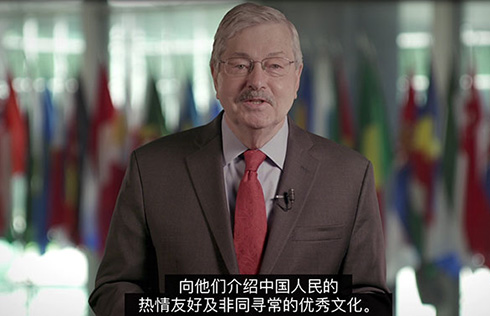Chinese cultural relics still have a long way home
Chinese cultural relics scattered overseas, in so many nefarious ways, are a constant reminder of the Chinese people's century-long, collective sense of shame and humiliation. How and where the vast array of purloined or sold national treasures should be preserved remains a big question mark.
The exquisite artifacts with historical significance - sculptures, paintings and calligraphies, glassware, ceramics and porcelains - especially those that were taken away by means of robbery, theft, looting and smuggling during Westerners' invasion of China in the 19th century, are not just priceless. They also stand witness to the dark chapter of history when China was so weak, vulnerable and corrupt that it fell prey to superpowers of the West.

The burning down of Yuanmingyuan, the old Summer Palace, in 1860 and then its sacking by the Eight-Nation Alliance invasion in 1900 not only led to the capture and deaths of Chinese civilians, but also the looting and robbery of countless invaluable Chinese artifacts.
In his Expédition de Chine, celebrated French writer Victor Hugo described the killing and pillaging at Yuanmingyuan: "Two robbers breaking into a museum. One has looted, the other has burnt… One of the two conquerors filled its pockets, seeing that, the other filled its safes; and they came back to Europe laughing hand-in-hand. …Before history, one of the bandits will be called France and the other England."
Hugo hoped that one day France would feel guilty and return what it had plundered from China. China is still waiting.
More than 150 years later, Yuanmingyuan remains a sensitive topic and a trigger for nationalistic sentiment against atrocities and war crimes committed by foreign invaders. "The most breathtaking exhibition of Chinese treasures I've visited was in Britain, at the British Museum," said Amy Xu, a San Francisco resident. "It's not possible that any Chinese patrons to this museum wouldn't resent the cultural thefts 150 years ago."
According to UNESCO, there are approximately 1.64 million Chinese antiques on exhibit in 200 museums in 47 foreign countries, the majority of which were looted from China by English-speaking nations.
In 2009, China announced plans to send delegations to museums around the world, including the British Museum and the Victoria and Albert Museum in the UK and Palace of Fontainebleau in France, in a bid to document the lost Chinese artifacts. Meanwhile, civic organizations and individuals outside of China are stepping up their efforts to rescue overseas Chinese cultural relics through monetary methods such as purchase and donation or persistent demands.
Zhu Zuoquan, an overseas Chinese in San Francisco, is one of those individuals intent on returning precious Chinese relics to their home. He started his mission, focusing mainly on ancient ceramics and porcelains, around 20 years ago when he was still an archaeology illiterate.
A new immigrant from the Chinese mainland at the time, Zhu had little knowledge of Chinese antiques and relics, let alone the ability to differentiate, through subtle features, between porcelains produced by government or folk kilns.
"In 1997, my aunt from Taiwan gave me a catalogue of national treasures", Zhu recalled, "documenting artifacts on display at the National Palace Museum in Taipei. I was literally blown away."
From that enlightenment, Zhu let his enthusiasm guide him, gradually accumulating expertise, as well as a knack for treasure hunting.
"My wife and I have spent almost all our spare time shuffling back and forth among auction houses in the UK, the US and France over the past 20 years," Zhu said, adding he had paid a hefty price learning how to spot the authentic from the counterfeit and the worthy from the mediocre.
"I once bought a vase the vendor told me a Qing Dynasty (1644-1911) product for $10,000," he said. "That turned out to be a consummate sham."
Zhu's collection now contains around 300 pieces of ceramic and porcelain wares that range from the Song Dynasty (960-1279) to late Qing.
"My most prized possession is a Ming Dynasty (1368–1644) cup with peony, pheasant and dragon patterns," Zhu said, adding there were probably only three pieces of its kind in the world. "I refused lucrative offers from several auction houses. What I really want to do is to send them back to China." "Yet the formal demand for return of Chinese relics from foreign countries is far more difficult and has yet to yield any satisfactory results," said Zhao Sihong, who heads a group of volunteers in the US that searches for Chinese relics of historical value.
Contact the writer at junechang@chinadailyusa.com.


























